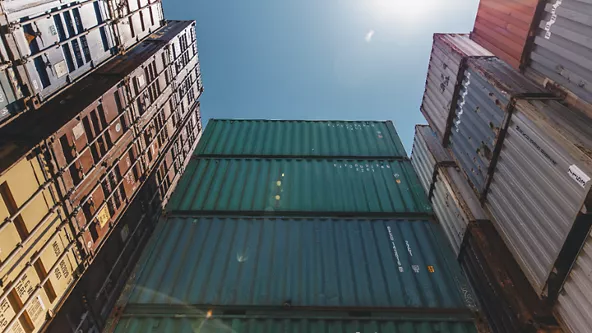The China Containerized Freight Index (CCFI) is one of the most trusted benchmarks for analyzing shipping costs worldwide. Many importers and exporters struggle with fluctuating freight rates, unexpected surcharges, and unstable delivery schedules. However, by following the CCFI, businesses can predict pricing trends, negotiate better contracts, and strengthen supply chain planning.
What Is the China Containerized Freight Index CCFI?
The CCFI was introduced in 1998 by the Shanghai Shipping Exchange. It tracks container freight rates on key global trade lanes departing from Chinese ports. Additionally, the index includes both contractual rates and spot market prices, giving it more depth than other benchmarks such as the Shanghai Containerized Freight Index (SCFI).
Why Is the CCFI Important for Businesses?
Although freight costs vary daily, the CCFI provides consistency and transparency. Companies use it to:
- Forecast ocean freight costs more accurately.
- Compare contract and spot rate fluctuations.
- Strengthen negotiation power with carriers.
- Align supply chain budgets with logistics strategies.
As a result, the index has become a trusted tool across global logistics networks.
Real-World Case Studies with CCFI
Case 1: Shenzhen → Los Angeles
- Cargo: 40HQ container of electronics
- Mode: Ocean freight (spot rate)
- Cost: USD 6,900
- Transit Time: 28 days
Case 2: Ningbo → Hamburg
- Cargo: 20GP textiles
- Mode: Contractual rate (long-term)
- Cost: USD 3,400
- Transit Time: 34 days
How Does the CCFI Compare to Other Freight Indices?
| Index | Coverage | Benefits | Drawbacks |
|---|---|---|---|
| CCFI | China → Global | Tracks both contract + spot rates | China-focused |
| SCFI | China → Global | Spot rates only, real-time | Volatile, short-term |
| FBX | Global | Digital platform-based, updated daily | Subscription fees |
| BDI | Global bulk | Covers dry bulk cargo (not containers) | Not container-specific |
To illustrate, the CCFI remains the most stable benchmark for Chinese exports.

How Much Does Container Shipping Cost Based on CCFI?
| Route | Avg. Rate (USD) | Transit Time |
|---|---|---|
| China → USA (West Coast) | $5,700–$6,900 | 26–30 days |
| China → USA (East Coast) | $6,800–$8,300 | 32–38 days |
| China → Europe (Rotterdam) | $3,200–$3,800 | 30–35 days |
| China → Middle East (Dubai) | $4,300–$4,700 | 22–28 days |
| China → South America (Brazil) | $5,600–$6,400 | 35–42 days |
Accordingly, businesses should always compare weekly CCFI updates before booking.
What Factors Influence the CCFI?
| Factor | Impact on Rates |
|---|---|
| Seasonal Demand | Q4 peak raises rates by 30–40%. |
| Fuel Prices | Bunker surcharges fluctuate with oil. |
| Port Congestion | Increases demurrage and detention fees. |
| Carrier Alliances | Adjust capacity to stabilize prices. |
| Trade Policies | Tariffs and sanctions shift trade lanes. |
Indeed, external factors make the CCFI a vital risk management tool.
How Does the CCFI Compare to Other Shipping Modes?
| Mode | Transit Time | Cost Estimate | Pros | Cons |
|---|---|---|---|---|
| Sea Freight | 25–40 days | $3,000–$7,000/container | Cheapest for bulk | Slow and delay-prone |
| Air Freight | 5–10 days | $5–$9/kg | Fast and reliable | Expensive |
| Rail Freight | 15–20 days | $350–$500/CBM | Balanced speed | Only to Europe |
Therefore, while sea freight is slow, it remains the most cost-effective for large shipments.
Which Ports Contribute to the CCFI?
The china containerized freight index ccfi gathers data from:
- Shanghai – Key hub for Europe and US shipments.
- Shenzhen (Yantian, Shekou) – Electronics and e-commerce cargo.
- Ningbo-Zhoushan – Textiles and general manufacturing.
- Qingdao – Automotive and heavy industry exports.
- Xiamen – Footwear, furniture, and apparel.
Each port’s data helps create a complete market overview.
What Documents Are Required When Shipping Under CCFI Routes?
| Document | Purpose |
|---|---|
| Bill of Lading | Carrier contract proof |
| Commercial Invoice | Declares value and HS codes |
| Packing List | Details container contents |
| Certificate of Origin | Validates production location |
| Customs Declaration | Required for import/export clearance |
Proper documentation ensures smooth customs clearance and cost accuracy.
Pros and Cons of Using the CCFI
| Pros | Cons |
|---|---|
| Transparent benchmark for costs | Focused only on China exports |
| Tracks both contract + spot rates | Updated weekly, not daily |
| Useful for negotiations | Needs interpretation expertise |
| Helps forecast shipping budgets | Cannot cover inland logistics |
On the other hand, companies that combine CCFI data with expert forwarders gain the most value.
Conclusion
The china containerized freight index ccfi provides a transparent, reliable benchmark for global shipping costs. By analyzing weekly updates, companies can forecast expenses, optimize delivery schedules, and negotiate with greater confidence. Ultimately, importers and exporters that combine CCFI insights with professional freight forwarder expertise secure better rates and build stronger supply chains.
- Consult TJ China Freight Forwarding for the lowest quote. They will provide you with reliable, cost-effective service.
FAQs
Q1.How often is the China Containerized Freight Index CCFI published?
It is updated weekly by the Shanghai Shipping Exchange, covering both spot and contractual freight rates for key routes.
Q2.Does the CCFI apply to small businesses importing from China?
Yes, SMEs can use the index to forecast budgets, compare quotes, and plan better shipping schedules for consistent supply chains.
Q3.What’s the difference between CCFI and SCFI?
The CCFI tracks both spot and contract rates, while the SCFI focuses on spot rates only, making it more volatile.
Q4.How do global fuel prices impact the CCFI?
Rising oil costs increase bunker charges, which in turn push container freight rates higher across all major global routes.
Q5.Can importers negotiate better deals using the CCFI?
Absolutely, businesses can leverage the CCFI as a reference point when negotiating long-term shipping contracts with carriers.




